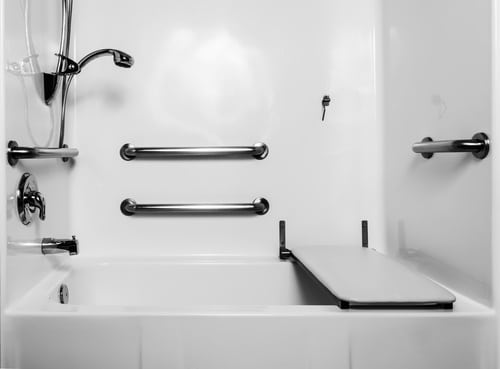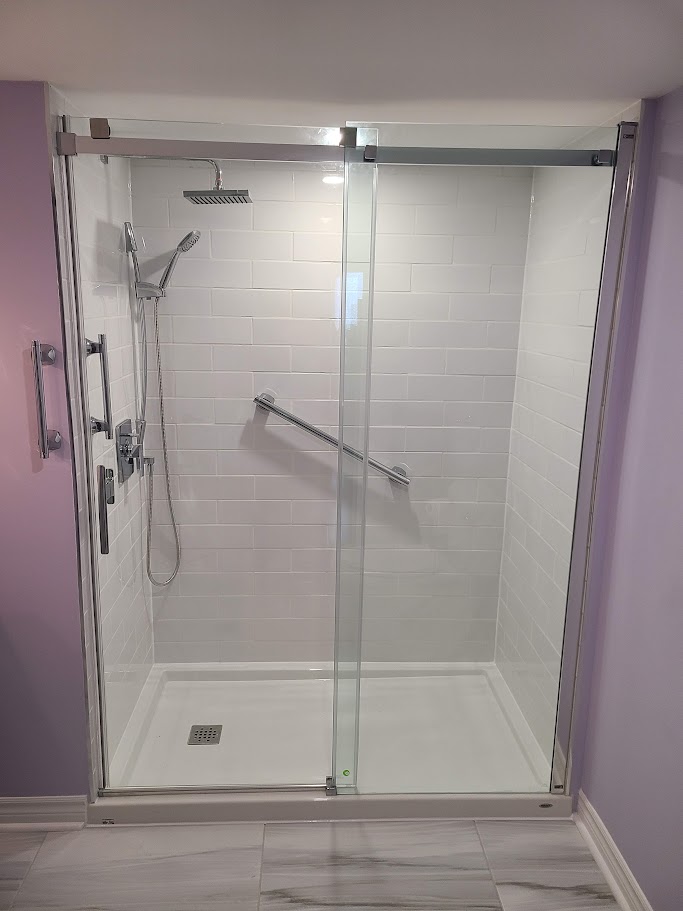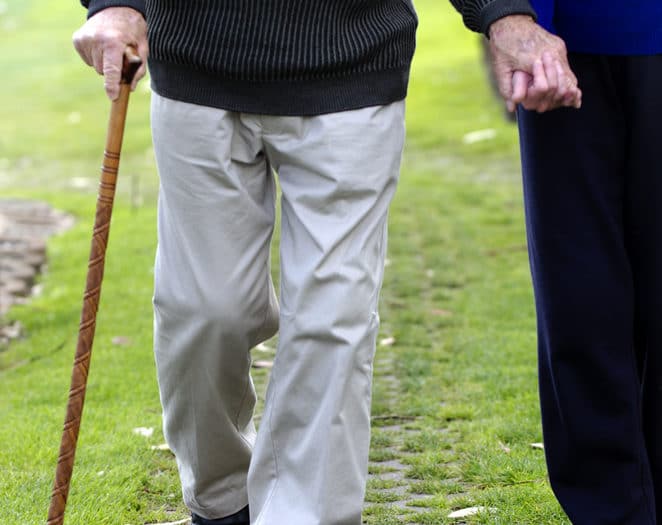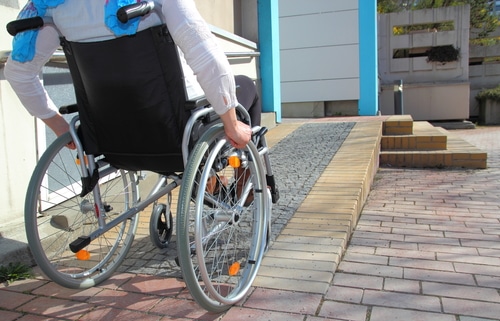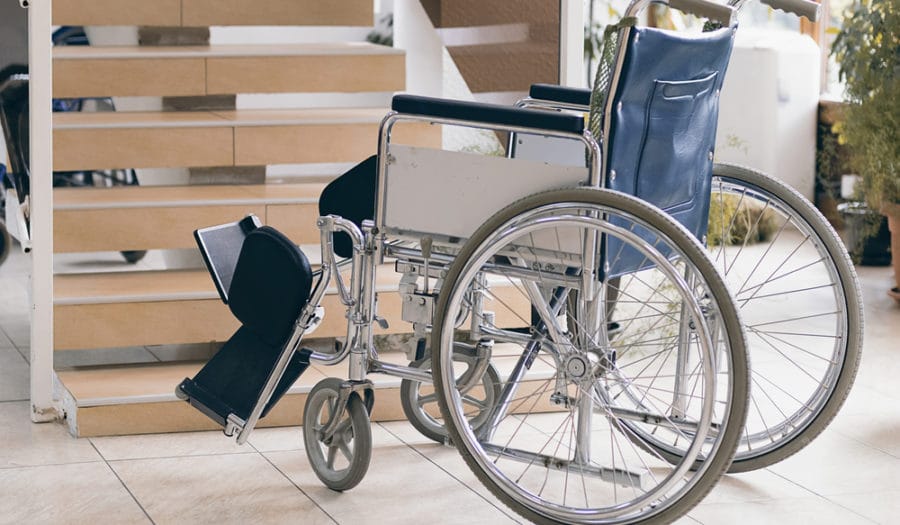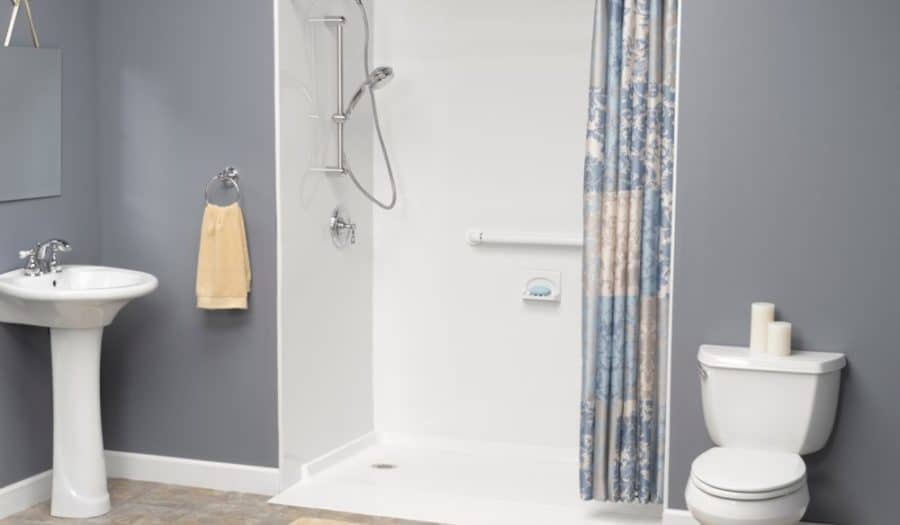Making the Bathroom a Safe Place
- https://renosgroup.ca/2014/10/">October 9, 2014
- By Keith Melanson
- In Bathrooms, Home Renovation Blog, Mobility, Renovations
Water and a slippery surface make for very dangerous conditions. Your bathroom can be quite hazardous especially for the young, elderly and disabled. If you would like to make your bathroom a safer place for your family, RenosGroup can provide a number of minor renovations that will help you avoid accidents.
Hand Rails/Grips
It can be extremely difficult at times getting in and out of the shower or bathtub, especially if the floor is slick and if there is nothing to hold on to. Hand rails and grips can be placed on the bathroom walls to allow for easy access in and out of the tub. In certain cases it is also a good idea to add them beside the toilet to make it easier for people to sit and stand. Rails are textured to allow for a sturdy grip without the fear of your hands slipping.
Hand rails offer numerous benefits beyond mobility assistance.
- Increased Confidence: The assurance of support fosters a sense of confidence and independence, especially for individuals with balance issues.
- Reduced Risk of Falls: Rails reduce the risk of slips and falls, creating a safer environment for everyone using the bathroom.
- Peace of Mind: Knowing that loved ones have the necessary support promotes peace of mind for both users and caregivers.
Invest in safety; invest in well-being.
Handrails and grips are not just safety features; they are investments in well-being and independence. Incorporating them into your bathroom, creates a space that fosters confidence, dignity, and peace of mind for all users.
Acrylic Bathtubs/Showers
Traditional bathrooms involve intricate tile work which can be very expensive and slippery. Thankfully, acrylic baths and shower walls are an affordable and safer option. These acrylic instillations can be completed in as little in one day, which greatly cuts down on man hours, and labour costs. You can also add special safety features such as bars and handrails and non-slip tub or shower floors.
Acrylic to the Rescue:
Thankfully, acrylic bathtubs and shower walls offer a compelling alternative. They are:
- Affordable: Compared to the cost of materials and installation for tile, acrylic offers a much more budget-friendly option.
- Safer: The inherent non-slip properties of acrylic minimize the risk of slips and falls, creating a safer bathroom environment.
- Quick Installation: Unlike tile, which can take days to install, acrylic tubs and showers can be completed in as little as one day, reducing disruption and labor costs.
- Customization Options: Don’t think that “affordable” means sacrificing style. Acrylic comes in a wide variety of colors, patterns, and textures to match your bathroom’s design.
Enhanced Safety Features:
While acrylic itself is safer than tile, you can further enhance safety by incorporating additional features:
- Grab Bars and Handrails: Strategically placed bars and rails provide added support for entering, exiting, and maneuvering within the shower or bathtub.
- Non-Slip Tub/Shower Floors: Invest in textured or etched tub or shower floors for even greater slip resistance.
Non-slip Flooring
Non-slip flooring in the bathroom instantly adds a huge safety factor that can take many worries off of your mind. Although you may think a bath mat or towel on the floor might do the trick, this is just one other thing people can slip on. Non-slip flooring in the bathroom makes gives your wet feet something easy to grip that can save you and your family from slips and falls.
Non-slip bathroom flooring is not just a safety upgrade; it’s an investment in the well-being of everyone using your bathroom. By prioritizing safety, you create a space that fosters confidence, independence, and peace of mind. So, step confidently into a safer future with the right non-slip flooring solution.
Additional Tips:
- Place bath mats strategically near shower and bathtub exits, but ensure they have a non-slip backing.
- Regularly clean and maintain your chosen flooring material to maximize its slip resistance.
- Consult with a flooring professional to discuss your specific needs and the best options for your bathroom.
By following these tips, you can create a beautiful and safe bathroom environment for all.
Lots of Open Space
If mobility is an issue RenosGroup can offer suggestions on how you can open up your bathroom allowing for easier wheelchair access. Extra space also works well for those with walkers.
When mobility is a concern, making the most of your bathroom space becomes crucial. At RenosGroup, we understand the importance of accessibility and can offer various solutions to transform your bathroom into a safe and comfortable haven.
Open Up the Doorway:
- Widen the entrance: Aim for a minimum doorway width of 36 inches (91 cm) to accommodate wheelchairs and walkers comfortably.
- Consider alternative doors: Sliding doors or pocket doors eliminate swinging door clearance issues and maximize usable space.
Clear the Clutter:
- Minimize unnecessary furniture and fixtures: Evaluate whether every item serves a purpose and remove anything that creates obstacles.
- Utilize wall-mounted storage: Opt for shelves, cabinets, and towel racks mounted on walls to keep the floor clear for easy maneuvering.
- Choose transparent shower doors: This helps visually expand the space and creates a feeling of openness.
Heat Lamp
Heat lamps are also a great idea as they can help you dry off more quickly. This means there will be less chance of water dripping when you get out of the tub or shower. It will also make it easier to towel dry and keep you warmer on chilly days.
Beyond Drying Off:
While drying off quickly is certainly a benefit, heat lamps offer more than just practicality:
- Warmth on Demand: Especially on colder days, the gentle warmth of a heat lamp instantly makes your bathroom more inviting and comfortable.
- Relaxation and Soothing: The radiant heat can contribute to a more relaxing and spa-like experience, easing muscle tension and promoting circulation.
- Reduced Risk of Slips and Falls: By minimizing the time spent wet on slippery surfaces, heat lamps potentially contribute to a safer bathroom environment.
Choosing the Right Heat Lamp:
- Size and wattage: Select a heat lamp appropriate for your bathroom size and desired level of warmth.
- Safety features: Opt for models with safety features like automatic shut-off and tip-over protection.
- Style and placement: Choose a design that complements your bathroom’s aesthetics and position it strategically for optimal coverage.
These simple renovations will make your bathroom a safer place for the entire family. Why not give us a call at (613) 727-9427 to get the ball rolling. You can also use this form to request a free in-home consultation and estimate.

